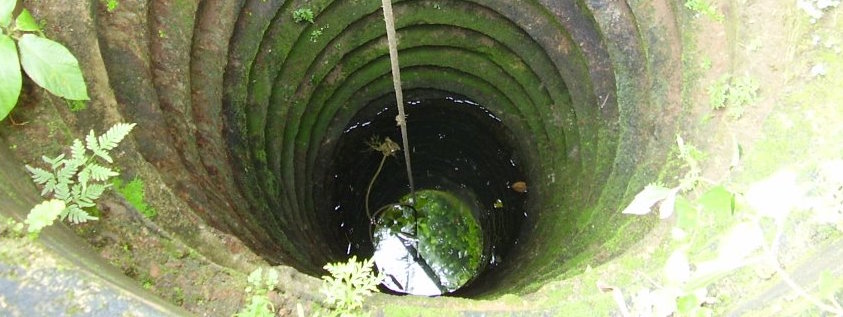August 19, 2016/in Well Drilling /by jeng
When it comes to well drilling, Applied Resource Management offers both commercial and residential services, which includes many different things, depending on the client’s needs.
One of our services is helping our clients deal with wells they no longer want or need. If you no longer need your well, it’s not as simple as walking away. In order provide long-term protection to the surrounding environment, a well cannot be just filled with cement. Instead, it must be professionally sealed and abandoned.
The Danger of an Abandoned Well
An unused well poses a great threat to groundwater. It provides a direct route for pollutants to reach the underground water supply, and the only way to halt this flow is to properly seal the well. There are also other dangers associated with an unused well—children and small animals could fall into it, accidents can occur when lawn equipment or cars are driven over it, and there can be legal issues at stake if it’s found that your well has contaminated the quality of your neighborhood’s water.
To ensure that your well is sealed properly and effectively, it’s wise to hire a licensed groundwater professional to get the job done, such as the ones who work at Applied Resource Management.
How to Seal a Well
There are many steps to properly sealing a well, and each project will vary slightly based on the unique situation. Below are the basic steps that we take when approaching a project of this kind, which should give you an idea of the complexity of the process.
- We begin by contacting the local health department to obtain a water well abandonment permit. We then complete the permit, which includes a description of our methods and the materials and equipment we plan to use. The permit is then submitted to the local health department for approval.
- Once the permit has been approved, we can begin the sealing process. The first step is to remove all material from the water well, such as the pump, pipe, pump cylinder, and electric cable.
- Next, we measure the depth and diameter of the well and the static water level, which is the distance from the soil surface to the level of non-pumping water in the well. We also check to see if there are any foreign materials at the bottom of the well. If so, we try to remove these before we begin sealing.
- Once the well is clean and empty, we disinfect the well, following the guidelines laid out in the North Carolina Well Construction Act and as outlined in the permit that was submitted to and approved by the local health department.
- Our last step is to complete a Well Abandonment Record that outlines the work completed, which we submit to the local health department and the North Carolina Department of Environmental Quality. This is the record for your well’s successful sealing, and proves that you—and Applied Resource Management—has completed the process in a safe and legal manner.
We hope this article sheds some light on the process of abandoning a well. If you have an unused well on your property and want to seal it, contact Applied Resource Management today. Together, we’ll make sure the job is “well” done.


